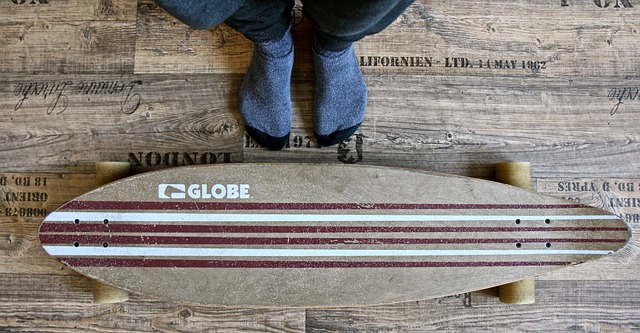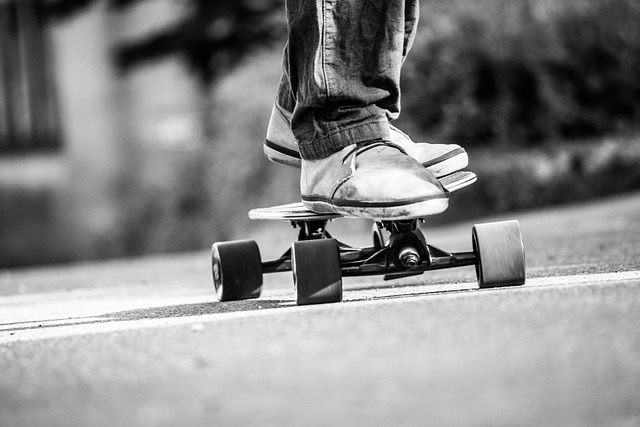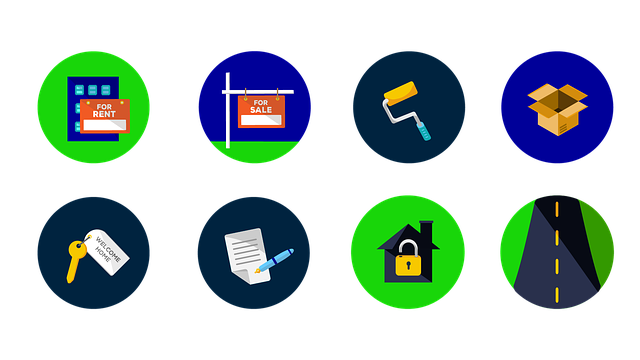For newcomers to skating, a longboard offers an excellent entry point with its smooth ride, stability at moderate speeds, and designs suited for cruising and carving. Longboards are durable, allowing skaters to focus on learning without frequent replacements. Flexible decks cater to various riding styles, with drop-through platforms providing enhanced stability for beginners and more precise control for advanced riders. Choosing the right flex level ensures a personalized experience based on skill level and preference. Material options range from traditional 7-ply maple to modern fiberglass-reinforced decks, offering durability, lighter weight, and improved maneuverability. Combining art and functionality in deck design enhances grip, personal style, and safety. Regular cleaning and conditioning ensure longboard maintenance for years of smooth rides.
Introducing our comprehensive guide to flexible deck options, tailored for both seasoned riders and those just stepping into the world of longboarding. We explore the ins and outs of longboards—the ideal deck for beginners seeking a smooth, accessible ride. From understanding various deck types and choosing the perfect flex to top materials and design elements, this article covers everything you need to know. Learn how to maintain your flexible deck, ensuring it remains in top shape for years to come, while enhancing both performance and personal style.
Understanding Longboards: The Perfect Deck for Beginners

For those new to the world of skating, a longboard can be an excellent starting point, offering a smooth and stable ride compared to shorter boards. These boards are designed for cruising and carving at moderate speeds, making them ideal for beginners learning to balance and maneuver. Longboards typically have longer decks, providing more space for feet placement and easing the transition between tricks and techniques.
The versatility of longboards is evident in their various shapes and sizes. From drop-through designs that offer lower riding height and enhanced stability to pintail boards, which are great for dancing and freestyle moves, there’s a longboard suited for every style and skill level. With their robust construction, these decks can withstand the rigors of learning, allowing beginners to focus on developing their skills without worrying about frequent replacements.
Types of Flexible Decks: A Comprehensive Overview

Flexible decks, a favorite among both seasoned riders and longboard for beginners, offer a unique blend of stability and maneuverability. These innovative designs cater to diverse riding styles, from cruising and carving to freestyle tricks. Among the popular types are drop-through platforms, characterized by a lower center of gravity, enhancing stability and making them ideal for beginners learning to balance and turn.
Pointy nose and tail shapes allow for tighter turns while keeping the deck responsive. Concave profiles provide extra pop for ollies and other tricks, while some flexible decks incorporate carbon fiber or composite materials for added strength and durability without sacrificing flexibility—perfect for those looking to progress from cruising to more advanced maneuvers.
Choosing the Right Flex: What It Means and Why It Matters

When looking into flexible deck options, understanding flex ratings is crucial. Deck flex refers to the amount a board bends under pressure, measured on a scale from soft (more bendable) to hard (less bendable). For longboard for beginners, choosing the right flex matters greatly as it directly impacts riding style and comfort.
A softer deck flex provides enhanced cushion and shock absorption, making it ideal for beginners learning to balance and carve turns. Conversely, stiffer decks offer better control and precision, which suits more advanced riders aiming for faster speeds and technical maneuvers. Thus, selecting the appropriate flex level ensures a personalized longboard experience that caters to individual skill levels and riding preferences.
Top Materials for Longboard Decks: Durability and Performance

When it comes to choosing a material for your longboard deck, especially for beginners, durability and performance are key considerations. Traditional materials like 7-ply maple offer excellent stability and a smooth ride, making them a popular choice among newcomers. Maple is known for its strength and ability to withstand the rigors of cruising and carving, ensuring your longboard for beginners remains reliable over time.
However, modern alternatives have emerged, providing both durability and innovative performance features. Composite materials, such as fiberglass-reinforced decks, offer enhanced resistance to damage and a lighter weight, allowing for easier maneuverability. These options are ideal for riders seeking speed and agility without compromising on durability.
Design Elements: Art Meets Functionality on Your Deck

When designing your deck, especially if you’re a beginner using it for longboarding, consider how art can seamlessly blend with functionality. Incorporate creative elements that not only enhance the aesthetic appeal but also serve practical purposes. For instance, intricate wood grain patterns or custom graphics on the deck surface can add a personal touch while providing extra grip for better control during rides.
Think about incorporating LED lighting to create a stunning visual effect, especially during night sessions. This isn’t just about aesthetics; strategically placed lights can improve visibility and safety. Moreover, consider deck rails and footholds with unique designs that offer stability without compromising on style. These design elements ensure your longboarding experience is both enjoyable and secure.
Maintenance Tips: Keeping Your Flexible Deck in Top Shape

Maintaining a flexible deck, especially a longboard designed for beginners, is relatively straightforward if you follow some simple guidelines. Regular cleaning and conditioning are key to keeping your board in top shape. Start by sweeping or brushing off any dirt or debris after each ride, this helps prevent small particles from settling into the deck’s surface. For more thorough cleaning, use a soft cloth dampened with warm water and mild soap. Avoid harsh chemicals that could damage the deck’s finish.
Additionally, flexible decks benefit from periodic conditioning to maintain their flexibility and longevity. Apply a small amount of high-quality wax, specifically designed for longboards, using a clean cloth or pad. Buff the wax in gently circular motions, focusing on the areas where your feet rest. This process not only enhances grip but also shields the deck from the elements, keeping it protected and ensuring a smooth ride for years to come, especially for those just starting out with longboarding.
